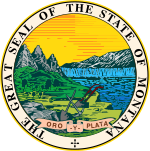
United States gubernatorial elections were held on November 2, 2004, in 11 states and two territories. There was no net gain in seats for either party, as Democrats picked up an open seat in Montana while defeating incumbent Craig Benson in New Hampshire, while Republicans defeated incumbent Joe Kernan in Indiana and won Missouri after Bob Holden lost in the primary. These elections coincided with the presidential election.

Roy Elmer Ayers was a U.S. Democratic politician. He served as a member of the United States House of Representatives and as the 11th Governor of Montana. He was the first governor of Montana to be born in what would become the state of Montana.

The 1926 New York state election was held on November 2, 1926, to elect the governor, the lieutenant governor, the state comptroller, the attorney general, a U.S. Senator, the chief judge and an associate judge of the New York Court of Appeals, as well as all members of the New York State Assembly and the New York State Senate. A referendum to repeal Prohibition was also proposed and accepted by a very large majority.

The 1916 United States presidential election in Montana took place on November 7, 1916 as a part of the 1916 United States presidential election. Voters chose four representatives, or electors to the Electoral College, who voted for president and vice president.

The 1922 United States Senate election in Montana took place on November 7, 1922. Incumbent United States senator Henry L. Myers, who was first elected to the Senate in 1910, and was re-elected in 1916, declined to seek re-election. Former United States Attorney Burton K. Wheeler won the Democratic primary and advanced to the general election, where he faced Carl W. Riddick, the United States Congressman from Montana's 2nd congressional district and the Republican nominee. Ultimately, Wheeler defeated Riddick comfortably and won his first term in the Senate.

The 1928 United States Senate election in Montana took place on November 6, 1928. Incumbent United States Senator Burton K. Wheeler, who was first elected to the Senate in 1922, ran for re-election. After successfully defeating several challengers in the Democratic primary, Wheeler advanced to the general election, where he faced Republican nominee Joseph M. Dixon, the former Governor of Montana who had previously served in the United States Senate from 1907 to 1913. Though the election was closer than Wheeler's first election, he still managed to defeat Dixon to win his second term in the Senate.

The 1946 United States Senate election in Montana took place on November 5, 1946. Incumbent United States Senator Burton K. Wheeler, who was first elected to the Senate in 1922, and was re-elected in 1928, 1934, and 1940, ran for re-election. He was challenged in the Democratic primary by Leif Erickson, the Chief Justice of the Montana Supreme Court, and, following a close election, was narrowly defeated by Erickson. In the general election, Erickson faced State Senator Zales Ecton, the Republican nominee. Ultimately, Ecton defeated Erickson by a fairly wide margin, winning his first and only term in the Senate. Another Republican would not be elected Senator from Montana until 42 years later, when Conrad Burns narrowly won the 1988 election.
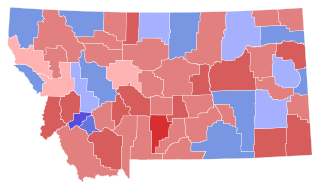
The 1988 Montana gubernatorial election took place on November 8, 1988. Incumbent Governor of Montana Ted Schwinden, who was first elected in 1980 and was re-elected in 1984, declined to seek re-election to a third term, creating an open seat. Stan Stephens, the former president of the Montana Senate, won a close Republican primary, and advanced to the general election, where he was opposed by Thomas Lee Judge, Schwinden's predecessor as governor and the Democratic nominee. Though the general election was hotly contested, Stephens ultimately defeated Judge, becoming the first Republican to win a gubernatorial election in Montana since 1964.

The 1980 Montana gubernatorial election took place on November 4, 1980. Incumbent Governor of Montana Thomas Lee Judge, who was first elected in 1972 and was re-elected in 1976, ran for re-election. He faced a stiff challenge in the Democratic primary from his lieutenant governor, Ted Schwinden, and he ultimately lost renomination. Schwinden, advancing to the general election, faced Jack Ramirez, the Minority Leader of the Montana House of Representatives and the Republican nominee. Although Ronald Reagan, the Republican presidential nominee, won the state in a landslide that year, Schwinden comfortably defeated Ramirez to win his first of two terms as governor.

The 1976 Montana gubernatorial election took place on November 2, 1976. Incumbent Governor of Montana Thomas Lee Judge, who was first elected in 1972, ran for re-election. He won the Democratic primary unopposed, and moved on to the general election, where he was opposed by Bob Woodahl, the Attorney General of Montana and the Republican nominee. Ultimately, Judge defeated Woodahl by a landslide to win his second and final term as governor.
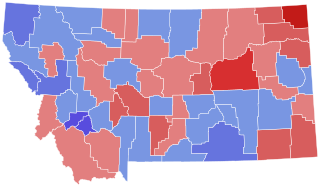
The 1972 Montana gubernatorial election took place on November 7, 1972. Incumbent Governor of Montana Forrest H. Anderson, who was first elected in 1968, declined to seek re-election. Thomas Lee Judge, the Lieutenant Governor of Montana, won a competitive Democratic primary, and moved on to the general election, where he faced Ed Smith, a rancher and the Republican nominee. Although then-President Richard Nixon won the state in a landslide in that year's presidential election, Judge managed to handily defeat Smith, winning his first of two terms as governor.
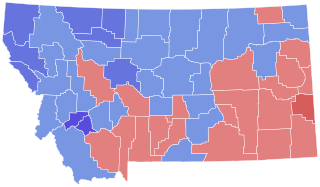
The 1948 Montana gubernatorial election took place on November 2, 1948. Incumbent Governor of Montana Sam C. Ford, who was first elected Governor in 1940 and was re-elected in 1944, ran for re-election. He won the Republican primary and advanced to the general election, where he faced John W. Bonner, the former Attorney General of Montana and the Democratic nominee. Ultimately, Bonner defeated Ford handily in his bid for re-election, winning his first and only term as governor.

The 1944 Montana gubernatorial election took place on November 7, 1944. Incumbent Governor of Montana Sam C. Ford, who was first elected Governor in 1940, ran for re-election. He won the Republican primary and moved on to the general election, where he was opposed by Leif Erickson, a former Chief Justice of the Montana Supreme Court and the Democratic nominee. Although then-President Franklin D. Roosevelt comfortably won the state in that year's presidential election, Ford defeated Erickson by a wide margin to win his second and final term as governor. This election is the first time that an incumbent Republican Governor of Montana was re-elected or won re-election.

The 1940 Montana gubernatorial election took place on November 5, 1940. Incumbent governor of Montana Roy E. Ayers, who was first elected governor in 1936, ran for re-election. He narrowly won the Democratic primary by just over a thousand votes to win renomination, and advanced to the general election, where he was opposed by Sam C. Ford, a former Associate Justice of the Montana Supreme Court and the Republican nominee. Ultimately, in spite of the fact that then-President Franklin D. Roosevelt comfortably won the state in that year's presidential election, Ford narrowly defeated Ayers to win his first of two terms as governor.

The 1936 Montana gubernatorial election took place on November 3, 1936. Incumbent Governor of Montana Elmer Holt, who became governor in 1935 upon the death of Frank Henry Cooney, ran for re-election. He was challenged in the Democratic primary by a number of challengers, and was narrowly defeated for renomination by United States Congressman Roy E. Ayers of Montana's 2nd congressional district. Ayers advanced to the general election, where he faced Frank A. Hazelbaker, the former Lieutenant Governor of Montana and the Republican nominee. Following a close election, Ayers narrowly defeated Hazelbaker to win what would be his first and only term as governor.

The 1932 Montana gubernatorial election took place on November 8, 1932. Incumbent Governor of Montana John E. Erickson, who was first elected governor in 1924 and was re-elected in 1928, ran for re-election. He won the Democratic primary with a plurality and advanced to the general election, where he faced Frank A. Hazelbaker, the Lieutenant Governor of Montana. Despite the fact that Franklin D. Roosevelt carried the state in a landslide in the presidential election that year, Erickson only narrowly defeated Hazelbaker to win re-election to his third and final term as governor, though he would later resign just a few months into his term to appoint himself to the United States Senate.

The 1928 Montana gubernatorial election took place on November 6, 1928. Incumbent Governor of Montana John E. Erickson, who was first elected governor in 1924, ran for re-election. Erickson only narrowly won the Democratic primary against future Governor Roy E. Ayers, and advanced to the general election, where he was opposed by U.S. Attorney Wellington D. Rankin, the former Attorney General of Montana. Although Herbert Hoover carried the state in a landslide in the presidential election that year, Erickson won re-election to his second term as governor in a landslide over Rankin.
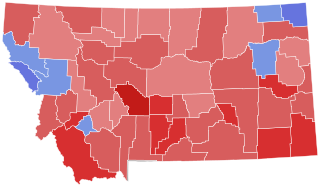
The 1920 Montana gubernatorial election took place on November 2, 1920. Incumbent Governor of Montana Sam V. Stewart, who was first elected Governor in 1912 and 1916, declined to run for re-election. To replace him, former United States Senator Joseph M. Dixon won the Republican primary, which was closely contested. In the general election, he faced Burton K. Wheeler, the former United States Attorney for the District of Montana and the Democratic nominee. Ultimately, Dixon defeated Wheeler by a wide margin to win his first and only term as governor.

The 1916 Montana gubernatorial election took place on November 7, 1916. Incumbent Governor of Montana Sam V. Stewart, who was first elected governor in 1912, ran for re-election. After comfortably winning the Democratic primary, he advanced to the general election, where he faced Frank J. Edwards, the former mayor of Helena, who narrowly emerged victorious in a close Republican primary. Benefitting from then-President Woodrow Wilson's landslide victory in Montana in the presidential election that year, Stewart narrowly won re-election to his second and final term as governor.

The 1920 United States Senate election in Colorado took place on November 2, 1920. Incumbent Democratic Senator Charles S. Thomas initially declined to run for re-election, and State Supreme Court Justice Tully Scott won the Democratic nomination to succeed him, facing off against former Leadville Mayor Samuel D. Nicholson, the Republican nominee. However, in October 1920, Thomas announced that he would run for re-election as the nominee of the National Party. However, Thomas's decision did not ultimately affect the outcome of the election. Aided by Republican presidential nominee Warren G. Harding's strong performance in the state, as well as Republican Governor Oliver Henry Shoup's landslide re-election, Nicholson defeated Tully and Thomas in a landslide. Out of four candidates, Thomas placed fourth, winning just 3% of the vote and finishing behind Farmer–Labor nominee G. F. Stevens.

